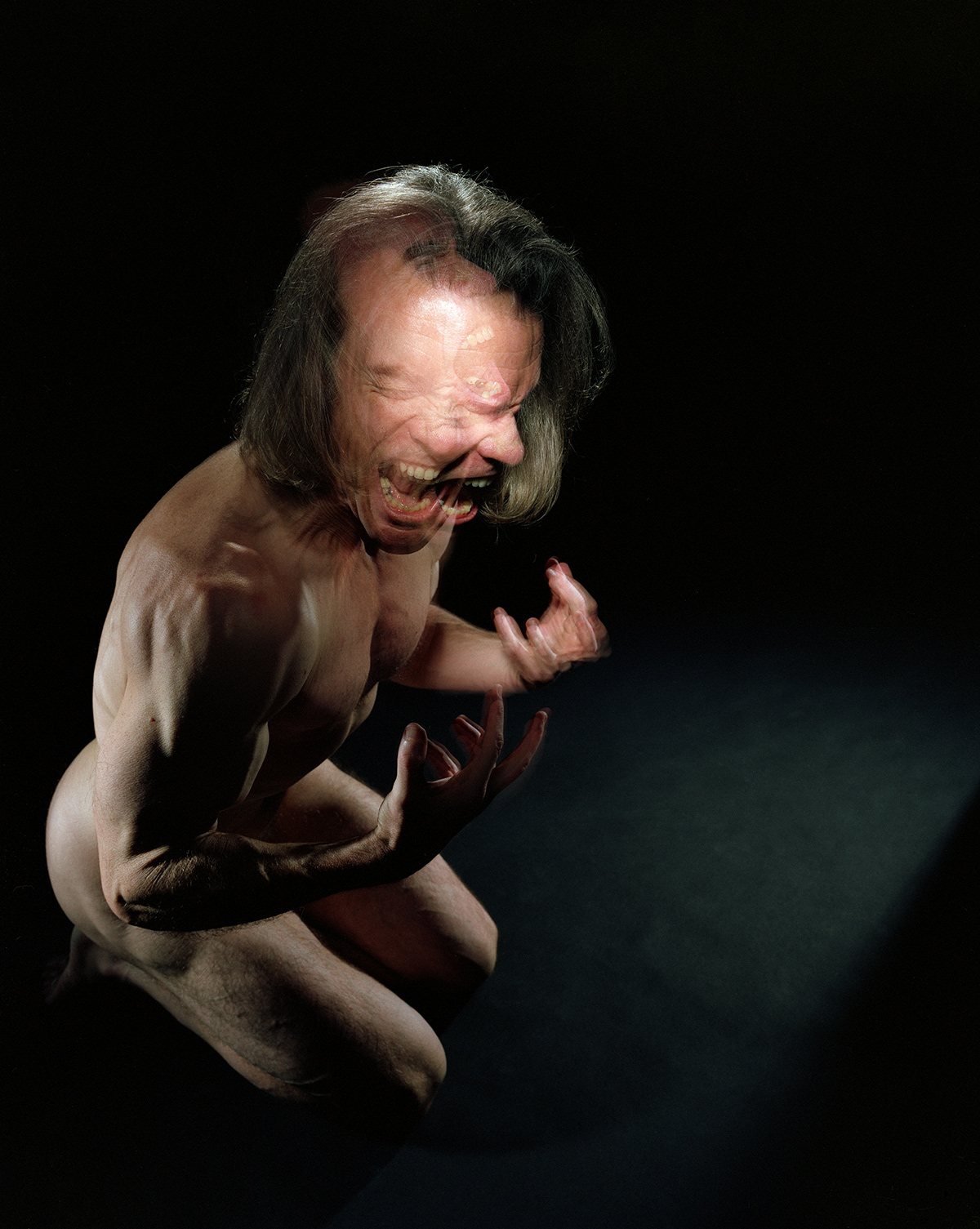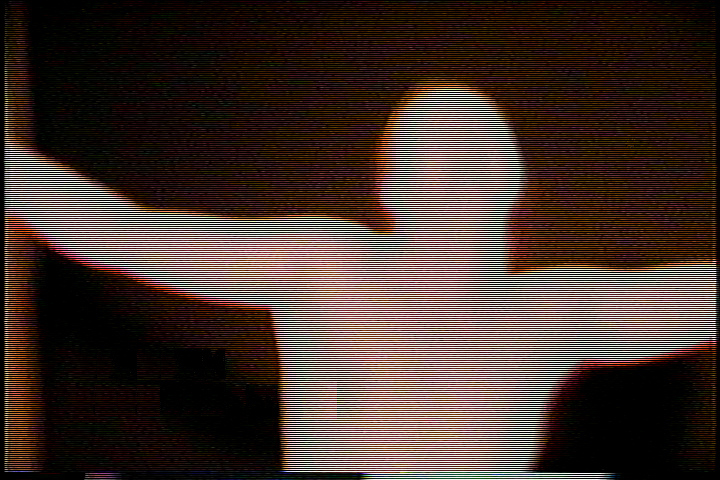x2 + y2 + z2 = 1
This body of work started as an exploration of psychological pain. I recorded primeval screams on video to connect with the unconscious mind and delve into the human psyche through a static image. The photographic scale is larger than life, which abstracts the body and forms a surface pattern of lines. When viewed from a typical distance, the outcome is reminiscent of Op Art, drawing the spectator in and accentuating the illusion of movement. Stepping back from the image, the emotions begin to surface and revel inner psychic conflicts.
Departing from conventional methods, I altered my photographic process. In the photography studio I placed my subjects in complete darkness, abandoning my reliance on vision. Instead, I used sound to determine the moment to trigger the flash, capturing the subject’s scream at its peak. This technique led me to discover similarities with the photography of the renowned French neurologist, Jean-Martin Charcot. In the early 1880s, Charcot documented patients suffering from hysteria, demonstrating the disconnect between self and body. The collaborative studies on hysterics between Sigmund Freud (who studied under Charcot) and Josef Breuer illuminated the dissociation of self and body in temporal terms, affirming my unique photographic approach to the psyche.
Psychoanalysis underscores the multifaceted nature of human personalities, encompassing both feminine and masculine. The cross-dressers depicted in this photographic series expressed that wearing women’s clothes enabled them to set aside their socially acceptable male persona to explore their feminine side. Although the details of their physical appearance are not fully resolved, subtle cues indicate gender, highlighting societal norms related to identity. These images provoke contemplation on the intersection of cultural symbols with gender representations, delving into the complexities of gender identity in the evolving landscape of societal perceptions.
The meticulous attention given to each model’s individual makeup prompted an exploration of the masquerade, contributing to the discussion with questions of representation and our culturally defined gender differences. Feminist critique has played a significant role, challenging traditional gender traits. For instance, in the work of Charcot, gender was associated with hysteria symptoms, focusing solely on his female patients. Such feminist critiques, including studies like Charcot’s, have broadened the discourse on gender representation.
The photographic series contributes to an ongoing dialogue, inviting viewers to question and challenge established norms. Ultimately, it reflects the fluid and complex nature of gender identity in our contemporary world.






